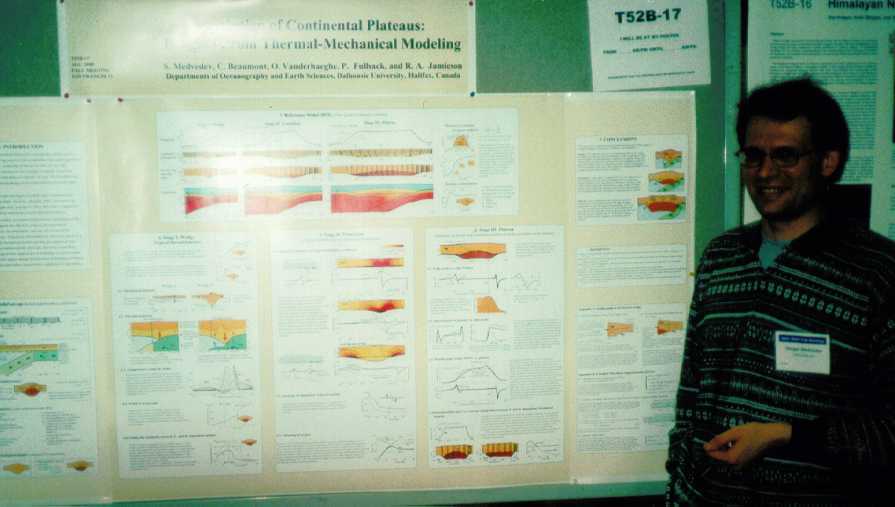
Departments of Oceanography and Earth Sciences, Dalhousie University,
Halifax, Canada.
1. IIntroduction
During prolonged
thickening of the crust during orogenesis the radioactive heat-producing
material that accumulates may cause significant heating and, as a result,
weakening of the lower crust. In turn, this weakening can lead to mechanical
decoupling of orogenic crust from underlying mantle and formation of a
plateau. We test this hypothesis by modeling crustal thickening during
continental collision driven by basal subduction.
We focus on simple rheological models, depth dependent and temperature
dependent linear viscosity (Royden, 1996; Jamieson et al, submitted;
Vanderhaeghe et al, in prep.) to allow first order comparisons with simplified
analytical treatments of some physical problems.
In the simple models
we assume local isostatic equilibrium of the thickened crust and ignore
the effect of erosion, the exponential dependence of viscosity on temperature,
and any non-linear stress dependence of rheology. Numerical calculations
are, however, based on a fully coupled thermal-mechanical model, and they
are supported and augmented by scaling and asymptotic analyses, and series
of auxiliary models. By integrating several approaches to modeling, we
demonstrate that there are three main phases during the precursor and plateau
evolution. We show these phases and outline characteristic properties of
each phase.
2. Model set-up (Initial and boundary conditions)
3. Evolution of Reference Model (RM)
(Three stages of plateau evolution)
deformation
of Lagrangian grid (animation gif, 200 Kb)
4. Stage I: Wedge (Types of thermal behavior)
5. Stage II: Transition (Types of mechanical and rheological boundaries)
6. Stage III: Plateau (Influence of plateau type boundary conditions on the geometry of the plateau)
7. Conclusions
8. References